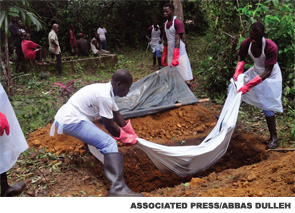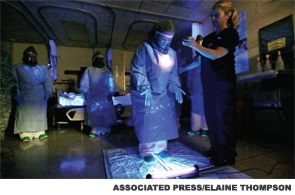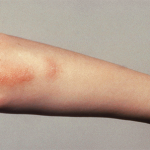
The recent Ebola epidemic in West Africa (more than 5,500 dead), with infection now having been carried to countries in other continents, has prompted a need for clinicians as well as public health officials to better understand the pathobiology of Ebola infection.
Although much remains to be learned about how to best manage patients infected with Ebola viruses, studies of the virus in tissue culture, mice, nonhuman primates (NHPs) and affected humans over the past two decades have yielded informative insights into viral pathogenesis and host responses to the virus. These studies are of interest not only to the clinical virologist but also to clinical immunologists in that they provide evidence for significant dysregulation of innate immune responses during Ebola infection that correlate with mortality. Indeed, the ability of the host to effectively attenuate initial inflammatory responses to Ebola infection appears to correlate with favorable outcomes. As such, whether in the presence or absence of effective antiviral therapies, intervention opportunities currently at our disposal may be useful for the supportive care of Ebola patients.

Ebola Virus
The structure and functional constituents of the five known Ebola virus subtypes have been well summarized in recent reviews.1-3 Ebola viruses are enveloped, single-stranded (-)RNA viruses (see Table 1). The lipid bilayer capsules are heavily glycosylated, which facilitates attachment to a variety of cell-surface membranes. The genome encodes for seven structural elements: nucleoprotein (NP), glycoprotein (GP), RNA-dependent RNA polymerase (L) and four structural proteins termed VP24, VP30, VP35 and VP40. In addition to facilitating viral replication, several of the gene products contribute to immune evasion by inhibiting activation of antiviral interferon genes in the host (VP24 and VP35) or coding for secretion of decoy targets (truncated sGP) that engender non-neutralizing antibodies.4
Herein, we focus on the clinical features and immunologic dysregulation observed during infection with Ebola and other hemorrhagic fever viruses, with emphasis on attributes shared with an entity familiar to rheumatologists in which similar clinical and laboratory findings are manifest—macrophage activation syndrome (MAS).
